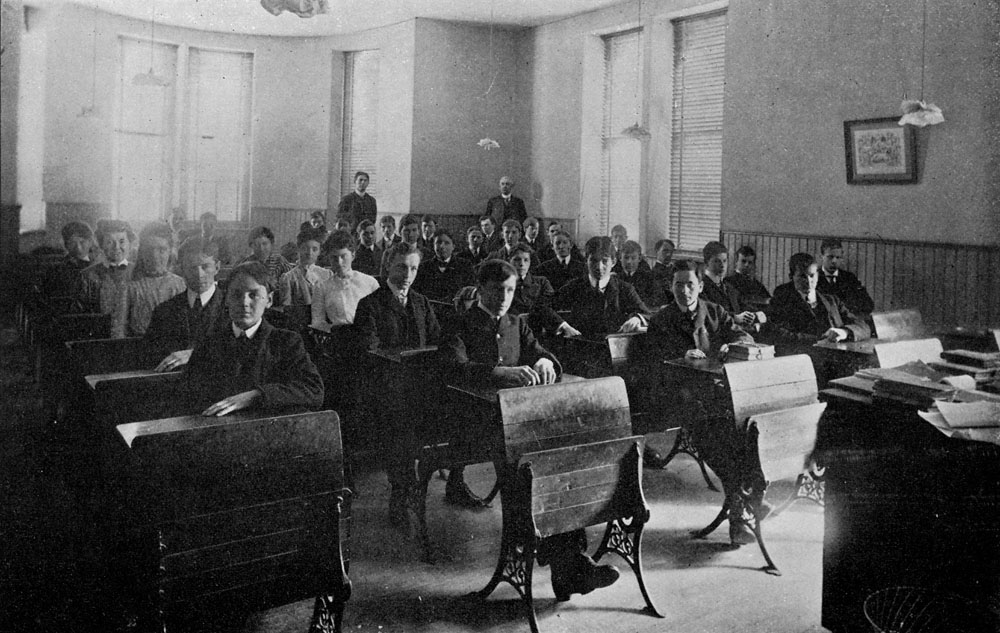Wednesday, 6 August 2014
Innovations in Education
I actually started this blog on July 16th and it's been percolating in my mind since...
This week (actually being 3 weeks ago) it seems my work and thoughts have been centered around the idea of design. We are working on our learning design briefs, exploring technology design and questioning how all of these items relate. One of our class discussions has left me questioning the rationale behind how classrooms are set up-- size, lighting, temperature, seating, white/blackboard and technology.
Part of this continuing question is based on my own research for my group project. I was trying to find historical references on how the education system began. During class, Sharon mentioned "the committee of ten," and I spent hours, which turned into my last few days on campus, trying to find out who these men were (more on this struggle in my next blog). In the process of my journey what I did find was everything but how curriculum was initially designed. I found articles and books on expectations of teachers, seating arrangement the purpose of the physical buildings and how it should be arranged, but what I couldn't find was historical reference of curriculum design itself. It's amazing that curtain design ranked higher than students. You can see some great schematics in Lindsay Baker's A History of School Design and its Indoor Environment Standards, 1900 to Today.
The irony of this statement didn't escape me
What I discovered was how little the learner was part of design process. Education had little to do with the learner and more to do with the final product--another obedient worker for the industrial age. Whereas Plato was one of the great thinkers, school were all about the great doers. I feel really sad for students during these times. Nobody wanted to hear a child's original thought but they would praise his or her great regurgitation.
I wonder how this changed? I know how and by who (Booth, Dewey Vygotsky, etc) but how did anyone dare to be brave enough to question the status quo? I can just imagine the look on the adults faces of someone, anyone, who question the current thinking/learning model of that time. Heck, a student could have found him or herself facing corporal punishment for questioning authority--no defiance to authority disorder during these times.
To be honest, in some ways schools haven't changed. We are one of the only industries, for the most part, which is stuck in a time warp. I remember when I first read this statement. I was sitting at the kitchen table reading The December 10, 2006 issue of Time Magazine. In it was was article that stated that Rip Van Winkle would be very much at home if he woke up in one of our schools. I'm glad to say that change is happening and what my fellow grad students and I are doing, along with all of the big thinkers that we are learning from, will hopefully lead education into the 21st century. But, change is slow and there are still some people who are in the education system who still say, "that's not the way we do things around here." I remember hearing that from a few (now very retired) educators and I wanted to bang my head against the wall. What was so scary about change? Maybe because I can become easily bored that embrace change, I seek it out--heck, I hunt it out some days. I love to shake things up. One of my best lessons had nothing to do with how I arranged the desks or what materials I put on my walls. I stood with my teaching binders and a large recycling bin and announced to my class that things needed to change....and the pitching began. My colleagues thought I was a little brave and or crazy but what took place afterwards was incredible. I actually asked my students what we should do next--they knew the unit we were covering and their ideas--they were better than what I had just dumped into the recycle bin. I didn't know it, but I had started to make steps to changing my teaching approach to enquiry base design. I was starting to follow Dewey's theory of placing the learner at center of learning and I had moved over to work beside. That was the day I stopped teaching and began facilitating.
References
Baker, Lindsey (2012). A History of School Design and its Indoor Environment Standards, 1900 to Today, January 2012, National Clearinghouse of Educational Facilities, Washington, DC, USA
Subscribe to:
Post Comments (Atom)

No comments:
Post a Comment
Thank you for giving me your feedback--learning is a two-way process and I'm glad that you decided to be part of the process.